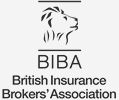At the labour party conference this September, leader Jeremy Corbyn revived the prospect of rent controls in as a tactic for reducing spiralling rents in the private sector.
Not only is a reinstatement of rent controls – last seen in the UK in the 1980s – likely to dampen much-needed investment in this sector of the housing market, but is also likely to end up hurting the very tenants that controls are intended to protect, argues a report in the Financial Times newspaper on the 27th of September 2017.
Coming after a number of years in which the pressure has mounted on buy to let businesses, many landlords are understandably concerned about the possibility of still further obstacles. Changes which are already making life difficult include:
Removal of mortgage interest tax relief
- to be phased in over a four-year period that begun in April this year is the effective removal of tax relief on buy to let mortgage interest payments;
- rather than being able to deduct mortgage interest repayments, landlords in future must pay a flat rate of 20% on the whole of their profits from the buy to let business;
- landlords in both higher and lower income tax rate brackets are likely to see their profits substantially squeezed by the new tax rules;
- the Telegraph newspaper has published a simple calculator designed to show the effect of the changes on the profits from any buy to let business;
Wear and tear allowance
- traditionally, landlords have been allowed an automatic 10% tax allowance for the replacement of furnishings and fittings subject to wear and tear;
- with effect from April 2016, however, this automatic allowance was replaced by one that applies only to money actually spent on the replacement of furnishings and fittings subject to wear and tear;
Stamp Duty
- at the same time – April 2016 – a Stamp Duty surcharge of an additional 3% was imposed on purchasers of a second property (in addition to their own home) costing more than £40,000;
- practically every buyer of property for rent, therefore, now needs to pay that additional surcharge;
Prudential Regulation Authority (PRA)
- with effect from January 2017, the Bank of England’s Prudential Regulation Authority has also made mortgage borrowing by prospective landlords, or those wanting to expand their portfolios, considerably more difficult;
- that is because lenders are now required to adopt stricter criteria when deciding whether to advance a loan – by the simple test of the anticipated ration of profit to expenditure on the cost of monthly mortgage repayments;
- effectively, new buy to let borrowers need to demonstrate a rental income of £140 for every £100 paid in mortgage instalments – against the previous minimum of £125.
British landlord – the poor man of Europe
All of this has, of course, cost British landlords dearly in terms of their competitiveness in relation to landlords in the rest of Europe.
The financial pages of the Daily Mail newspaper reported on the 19th of September 2017 reported that yields for British buy to let investors have fallen by 19 percentage points during the past 12 months.
Where Britain once ranked 15th most lucrative in Europe – in terms of rental income to property values – it has now slipped to just 25th place out of 29.







